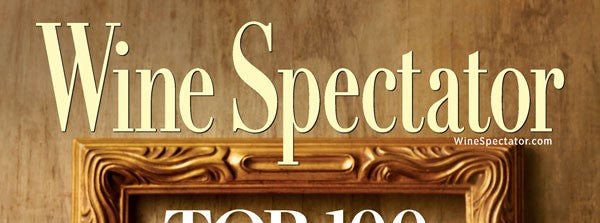About the Wine Spectator Rating System
Wine Spectator reviews 15K+ wines yearly via blind tastings by expert editors in Napa, NY, & Europe. Rated on balance, complexity, enjoyment (50-100 scale).

How Wine Spectator Rates
Wine Spectator uses a 100-point scale for evaluating wines, with scores based on a combination of factors such as balance, complexity, length, and overall enjoyment. Wines are tasted blind to ensure objective assessments. The scores range from 50 to 100 points, providing a comprehensive view of the wine’s quality.
About the Scores
Wines scoring below 80 points are generally considered below average or not recommended.
95–100
Exceptional Quality
The best wines, offering extraordinary complexity, balance, and length. These wines are considered outstanding and are highly recommended for collectors.
90–94
Outstanding Quality
Wines with distinctive character and excellent craftsmanship, representing a high level of quality and highly recommended for wine enthusiasts.
85–89
Very Good Quality
Wines that are well-crafted, highly recommended, and enjoyable, offering great value for wine lovers.
80–84
Good Quality
Wines that are solid and enjoyable but may not have the complexity or uniqueness of higher-rated wines. Worth considering for casual drinkers.
75–79
Average Quality
Wines that may appeal to specific preferences, though they lack the depth or character of higher-rated wines. Suitable for those seeking more accessible options.
50–74
Below Average Quality
Wines that are either flawed or lack the qualities necessary to be recommended, generally not suitable for serious wine enthusiasts.
Barrel Tastings
Scores for barrel tastings may appear as a range (e.g., 85-88 points), reflecting the wine’s unfinished status.
Wines Rated By Wine Spectator
-
 Sold out
Sold out2022 Wildeye Winery Zinfandel Lodi
Regular price $24.00Regular priceUnit price / per -
2021 Dutton-Goldfield Winery Emerald Ridge Vineyard Pinot Noir Russian River
Regular price $75.00Regular priceUnit price / per -
2020 Revelry Vintners AERIALS Series Block 18 Syrah Wahluke Slope WA
Regular price $60.00Regular priceUnit price / per -
2020 Gibbs Oakville "Selection" Cabernet Franc Oakville AVA Napa
Regular price $50.00Regular priceUnit price / per
Wine Spectator History
Wine Spectator follows a rigorous and transparent blind-tasting process to review over 15,000 wines annually. Their editors conduct tastings in controlled environments, both in their Napa and New York offices and in European vineyard regions. The majority of the wines reviewed are submitted by wineries or their U.S. importers, though the magazine also purchases wines across a variety of price points. Blind tasting is essential to ensure impartiality and accuracy in reviews. Editors specialize in specific wine regions, allowing them to develop expertise and consistently evaluate wines from those areas.
Each wine is evaluated for quality and characteristics, with detailed tasting notes and drink recommendations published regularly. The magazine’s scoring system ranges from 50 to 100 points, with wines receiving scores based on factors like balance, complexity, and overall enjoyment. Editors may also conduct barrel tastings of unfinished wines, giving them a preliminary score within a range (e.g., 85-88 points). These scores are subject to change as the wine matures. In addition to blind tastings, Wine Spectator occasionally features unofficial tastings of finished wines, typically tasted nonblind from personal cellars or during dining experiences, with these reviews clearly marked as nonblind.
To maintain the integrity of its reviews, the magazine adheres to strict ethical guidelines and ensures that its editors remain unbiased, with each wine’s rating finalized by the lead taster. This methodology allows Wine Spectator to offer trusted, expert wine reviews to its global readership.
Explore Other Rating Organizations
-

Chris Kissack of Winedoctor
Learn MoreWinedoctor (Chris Kissack): In-depth Bordeaux & Loire coverage since 2000. 26K+ tasting notes, profiles, vintages. Focuses on purity & precision. Subscription-based.
-

Gary Walsh
Learn MoreGary Walsh (The Wine Front co-founder): Approachable, funny Aussie wine reviewer. Expert yet witty, pro screw caps. Writes for pubs, co-authored "Big Red Wine Book." Key voice.





